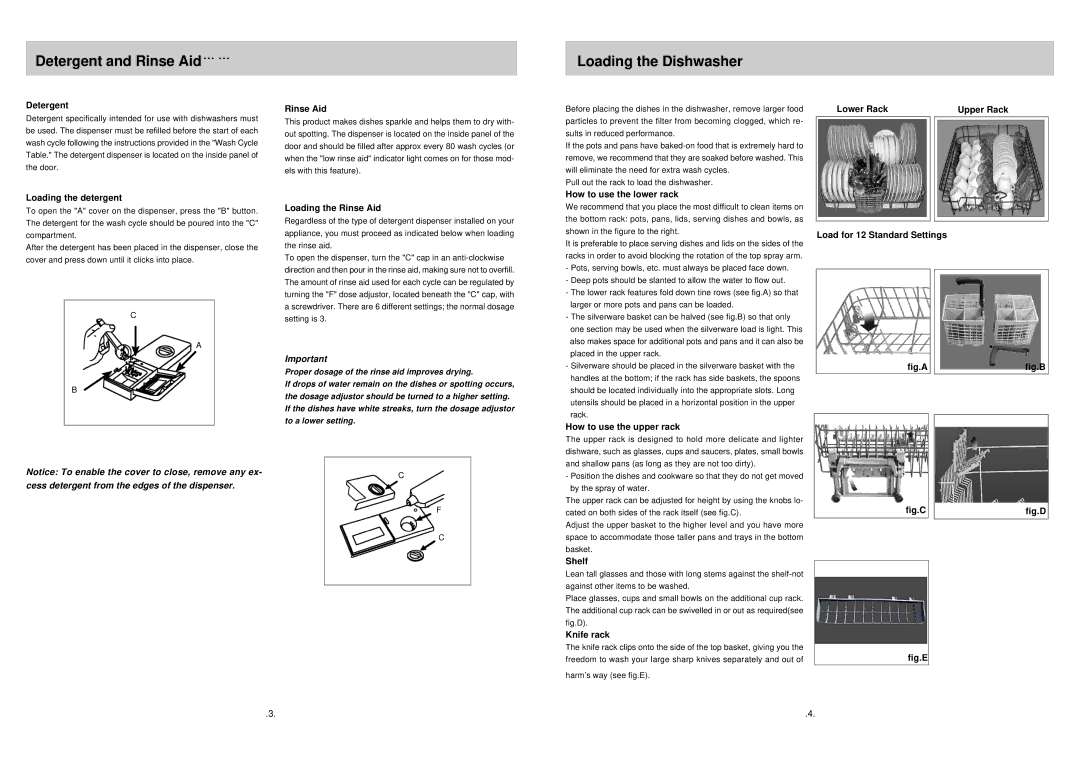WQP12-CFESS specifications
The Haier WQP12-CFESS is a versatile and efficient dishwashing machine designed to meet the demands of modern households. With its sleek design and innovative features, it brings convenience and elegance to your kitchen. One of the standout characteristics of the Haier WQP12-CFESS is its compact size, making it ideal for apartments or smaller homes where space is at a premium. Despite its smaller footprint, this model doesn't compromise on capacity; it can accommodate up to 12 place settings, making it suitable for families or those who frequently entertain guests.In terms of performance, the Haier WQP12-CFESS boasts a powerful washing system that utilizes multiple wash programs. These programs are tailored for different types of dishwashing needs, from heavily soiled pots and pans to delicate glassware. Users can select from several options, including eco-friendly settings that save water and energy, ensuring you get the best results while minimizing your environmental impact.
One of the notable technologies incorporated in the Haier WQP12-CFESS is the advanced spray arm system. This technology ensures that water reaches every corner of the dishwasher, providing thorough cleaning and leaving your dishes spotless. Additionally, it features a high-efficiency filtration system that helps to trap food particles, preventing clogs and promoting optimal performance over time.
The Haier WQP12-CFESS is also designed with user convenience in mind. The control panel is intuitive and easy to navigate, equipped with LED indicators for wash cycle progress. The delay start option allows users to set the dishwasher to run at a more convenient time, such as during off-peak energy hours.
Moreover, noise levels are a common concern for dishwashers, and the Haier WQP12-CFESS addresses this with a low noise operation feature that ensures the machine runs quietly, enabling you to maintain a peaceful kitchen environment.
Finally, this model is also user-friendly regarding maintenance, with easy access to the filter and spray arms for regular cleaning. The durable stainless steel interior is not only aesthetically pleasing but also enhances longevity. In summary, the Haier WQP12-CFESS combines efficiency, capacity, and user-friendly features, making it an excellent addition to any kitchen. With its smart technologies and thoughtful design, it stands out as a reliable choice for effective dishwashing.

